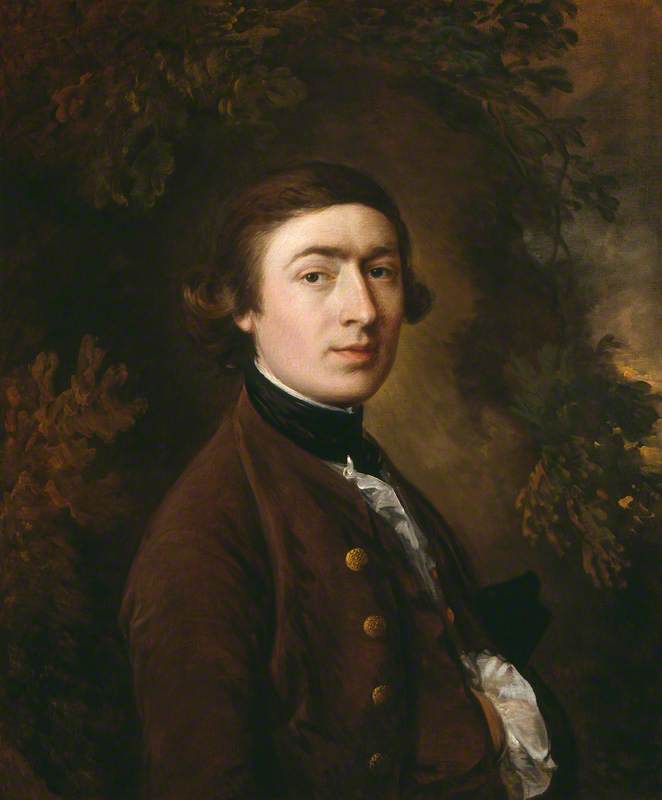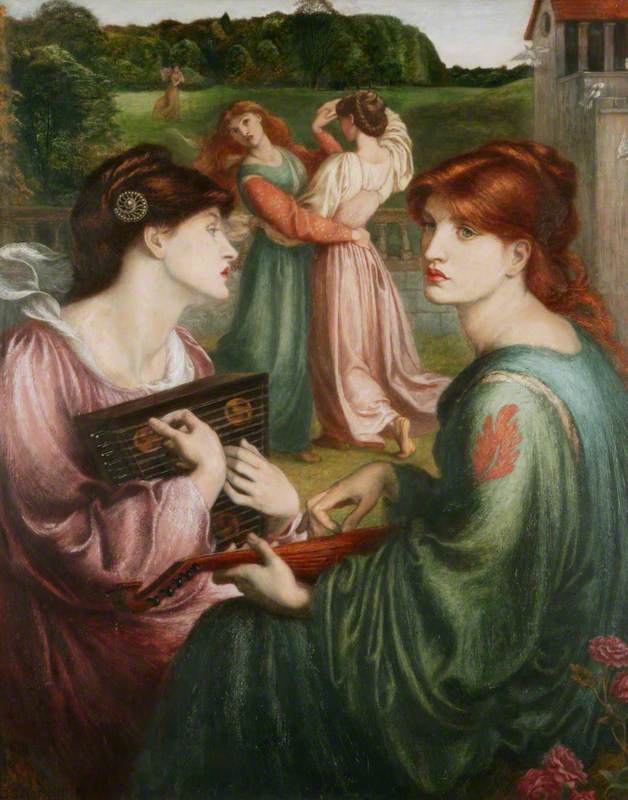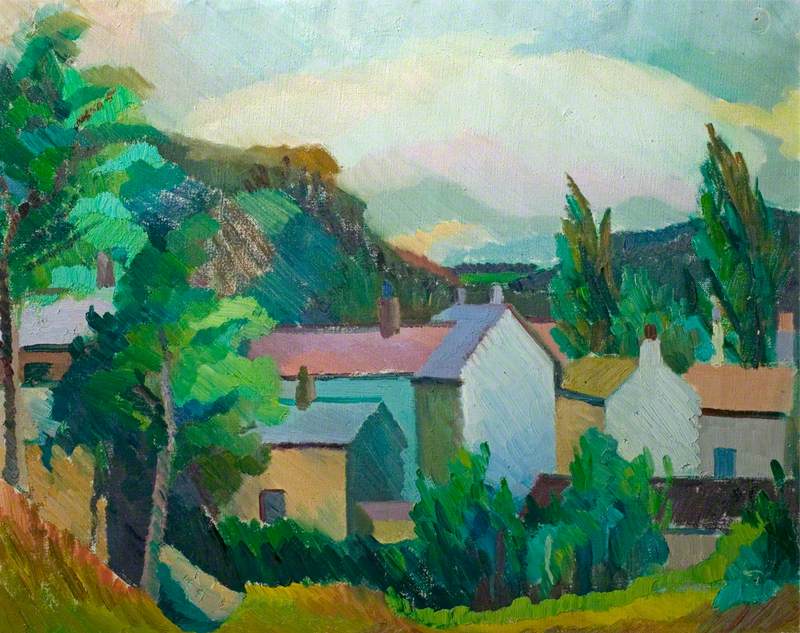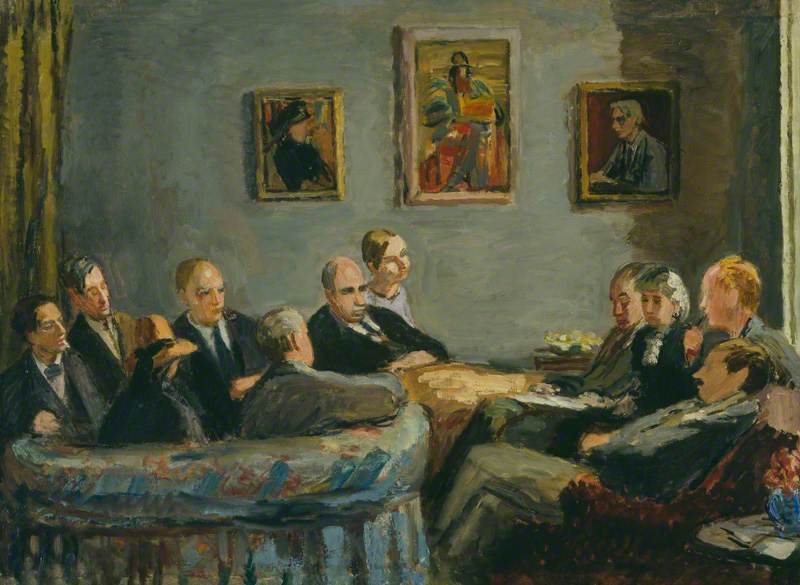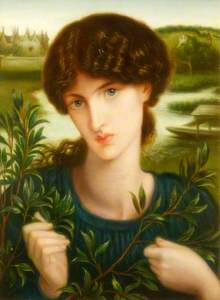Art in British collections hangs on a variety of walls – from white cube galleries and stately homes to town halls.
However, there is also a rich sub-category of museum – the museum established in an artist’s former home or studio. Though they are often small and out of the way, with many artists seeking solitude and seclusion in which to work, artist’s studio museums also have uniquely personal archives, and collections that offer new perspectives on art and art movements.
In many cases the house itself is a work of art, their historic interiors and studios displayed as if their owners have just stepped out for a walk.
Here at Watts Gallery – Artists’ Village, we run a network that brings them together, to promote and link these disparate places through their shared concerns with the making of art.
The Marianne North Gallery, London
Marianne North was a biologist and botanical artist who set off for Syria with her father in 1865. She spent the next couple of decades travelling through Japan, Borneo, Java and Ceylon, painstakingly painting the flora and fauna she found there.
Her attention to detail and eye for composition is visible in the paintings in the Marianne North Gallery, Kew Gardens, whose construction she oversaw on her triumphant return to Britain.
'It isn’t true what they say about all these being painted by one woman, is it?' she recalled one (male) visitor asking incredulously. It was – the Marianne North Gallery opened in 1882 and still stands as a monument to her life and art.
Dorich House Museum, Kingston University
Latvian-born Dora Gordine was a sculptor, as well as a global traveller. Her Kingston studio-home – designed by her and named after herself and her husband Richard Hare (‘Dor-Rich’) – still displays an array of her bronzes.
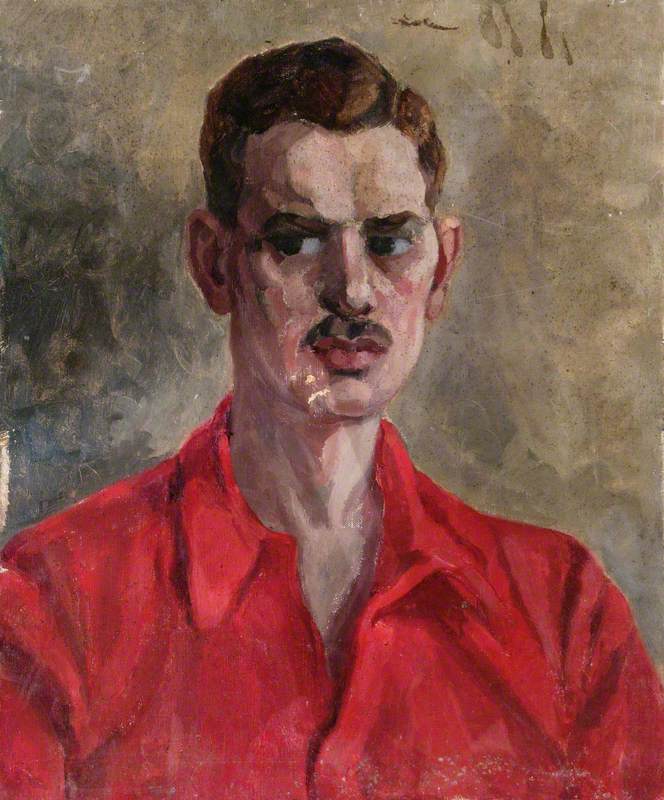
© Dorich House Museum, Kingston University. Image credit: Dorich House Museum, Kingston University
Portrait of a Man with a Moustache
Dora Gordine (1895–1991)
Dorich House Museum, Kingston UniversityHowever, the frowning Portrait of a Man with a Moustache, now in the collection of Dorich House Museum, brings sculptural planes to painted canvas. He still hangs at Dorich House alongside older works such as the anonymous A Circassian Soldier on Horseback, which was part of the collection of Russian artefacts Gordine built up with Hare, himself a scholar of Russian history and culture.
Gainsborough's House, Sudbury
Thomas Gainsborough, portraitist to eighteenth-century aristocracy, was born in Sudbury, Suffolk. Though he travelled London-wards in search of fortune as a ‘face-painter’, he retained a special tie to the East Anglian landscape. ‘I’m sick of portraits,’ he exclaimed, ‘and wish… to take my Viol de Gamba and walk off to some sweet village where I can paint Landskips and enjoy the fag end of life in quiet and ease’.

Image credit: Gainsborough's House
Descent from the Cross (after Peter Paul Rubens) c.1765–1770
Thomas Gainsborough (1727–1788)
Gainsborough's HouseThe collection now displayed at his birthplace, Gainsborough's House, includes experimental and apprentice works such as his copy of Rubens’s Descent from the Cross – an example of the unique glimpse of an artist’s technique offered by a studio museum. It hangs alongside early portraits of provincial patrons, who are depicted strolling through the Suffolk fields Gainsborough loved.
Charleston, East Sussex
Many artists’ studios became focal points for artistic communities and artists’ colonies. This was certainly the case at Charleston, a farmhouse in Sussex bought by Vanessa and Clive Bell, but soon a sanctuary for other members of the Bloomsbury Group, notably Virginia and Leonard Woolf and Duncan Grant.
The house became a canvas for an array of colourful murals by Bell and Grant – many of them still visible in the house today. However, Charleston and its inhabitants were also a source of inspiration. Vanessa Bell’s The Kitchen at Charleston depicts Grace Higgens, a family servant, and her loving painting Julian Bell, of her first child, is in the collection alongside Grant’s self-portrait wearing a turban from around the same period.
Sir John Soane’s Museum, London
Like Charleston, Sir John Soane’s Museum is more total artistic concept than ‘studio’. Soane designed the Bank of England building, and Dulwich Picture Gallery, but his Museum was intended as a source of architectural inspiration for students. Its collection includes an antique sarcophagus, bronzes and plaster casts, but also the complete series of Hogarth’s A Rake’s Progress.
The combination of domesticity and antique spectacular that results is encapsulated in the charming ' Fanny', a Favourite Dog commissioned from James Ward in 1822. However, Soane also collected works by the fashionable Canaletto, and Canaletto’s calm, fresh vision of the Venetian Piazza di San Marco offers a striking contrast to the rowdy exuberance of Hogarth’s Chairing the Member, from the painted series An Election Entertainment.
The Munnings Art Museum, Dedham
Sir Alfred Munnings came to Dedham, Essex, at the age of 40 but retained a great love for the landscape, which he immortalised in such paintings as September Afternoon on the Stour, Dedham . The Munnings Art Museum was established in Castle House, the home the artist shared with his wife, where his custom-made studio can still be seen – originally made in Norfolk, it was transported to Dedham piece by piece in 1920.

September Afternoon on the Stour: The White Canoe 1939
Alfred James Munnings (1878–1959)
The Munnings Art MuseumMunnings’s My Wife, My Horse and Myself , now in pride of place in the Museum’s Collection, is recognisably set against the Castle House background.

My Wife, My Horse and Myself exhibited 1935
Alfred James Munnings (1878–1959)
The Munnings Art MuseumHowever, the collection also includes a wide selection of the artist’s other work, including his painting of Lady Munnings’s dog, Black Knight – and Black Knight himself, stuffed and presiding over his original bedroom.
Leighton House Museum, London
Frederic, Lord Leighton, was a darling of the Victorian art world. His home in London’s South Kensington was intended to be as much a showcase of his taste and collection, as a private studio-home – as seen in its splendid ‘Arab Hall’.

Image credit: The Royal Borough of Kensington and Chelsea Culture Service, Leighton House Museum
A Boy Defending a Baby from an Eagle c.1850
Frederic Leighton (1830–1896)
The Royal Borough of Kensington and Chelsea Culture Service, Leighton House MuseumHowever, alongside set-piece paintings like Leighton’s A Boy Defending a Baby from an Eagle and Orpheus and Eurydice – examples of the smooth style that made him famous – the collection also includes suggestive colour sketches for later paintings, offering a nearly abstract insight into the artist’s working process.
Kelmscott Manor, West Oxfordshire
The designer and socialist William Morris acquired the Cotswolds Kelmscott Manor with Dante Gabriel Rossetti. Describing it as ‘that loveliest haunt of ancient peace’, Morris drew inspiration from the house in his Morris & Co designs, examples of which remain in its collection.

Image credit: Society of Antiquaries of London
Water Willow (after Dante Gabriel Rossetti) 1893
Charles Fairfax Murray (1849–1919)
Society of Antiquaries of LondonThough Morris was never able to spend protracted periods at Kelmscott, it clearly haunted his and Rossetti’s imagination. It appears in the background to Rossetti’s painting of Jane Morris, Water Willow, a copy of which by Charles Fairfax Murray remains at Kelmscott.
Kirsten Tambling, Administrator, Artist's Studio Museum Network
Find out more about the Artist's Studio Museum Network







